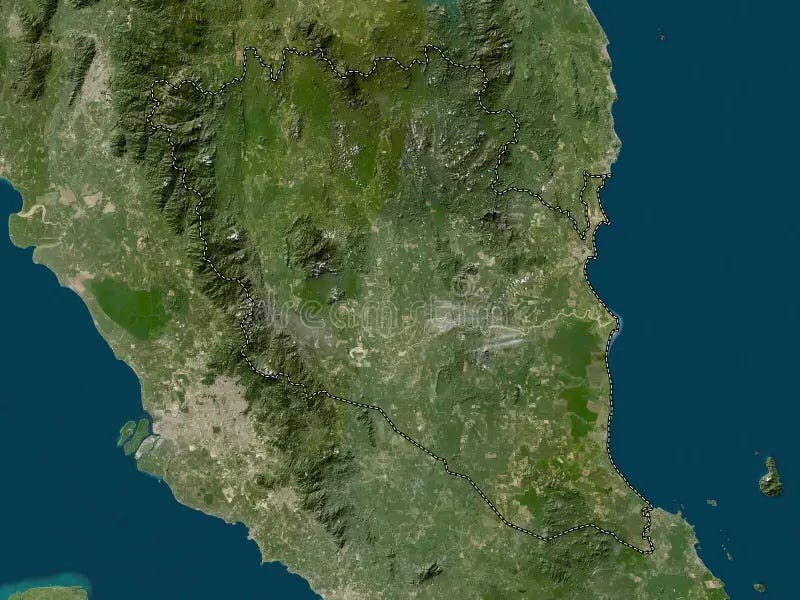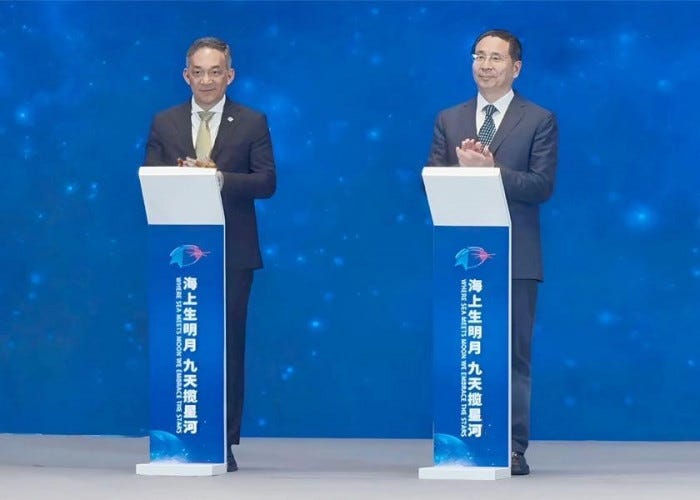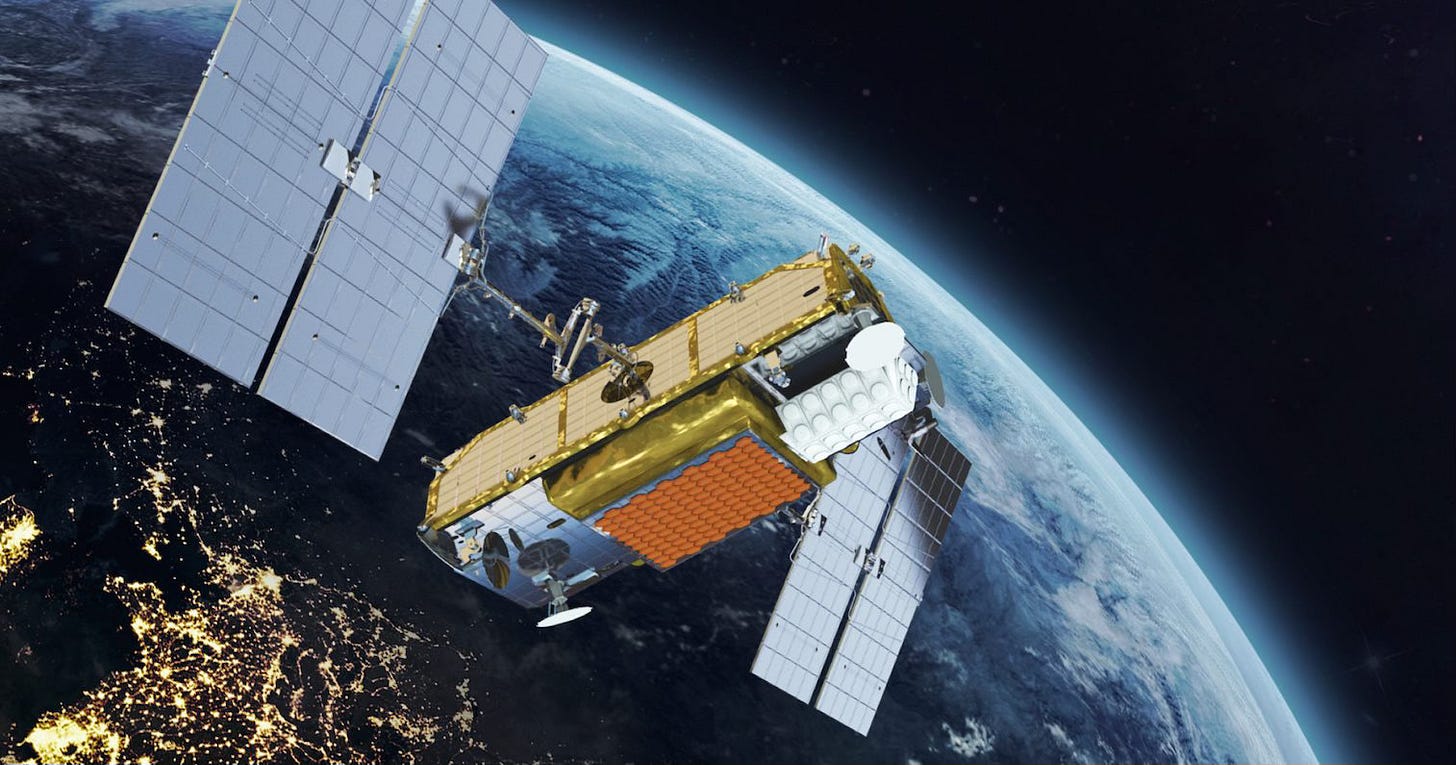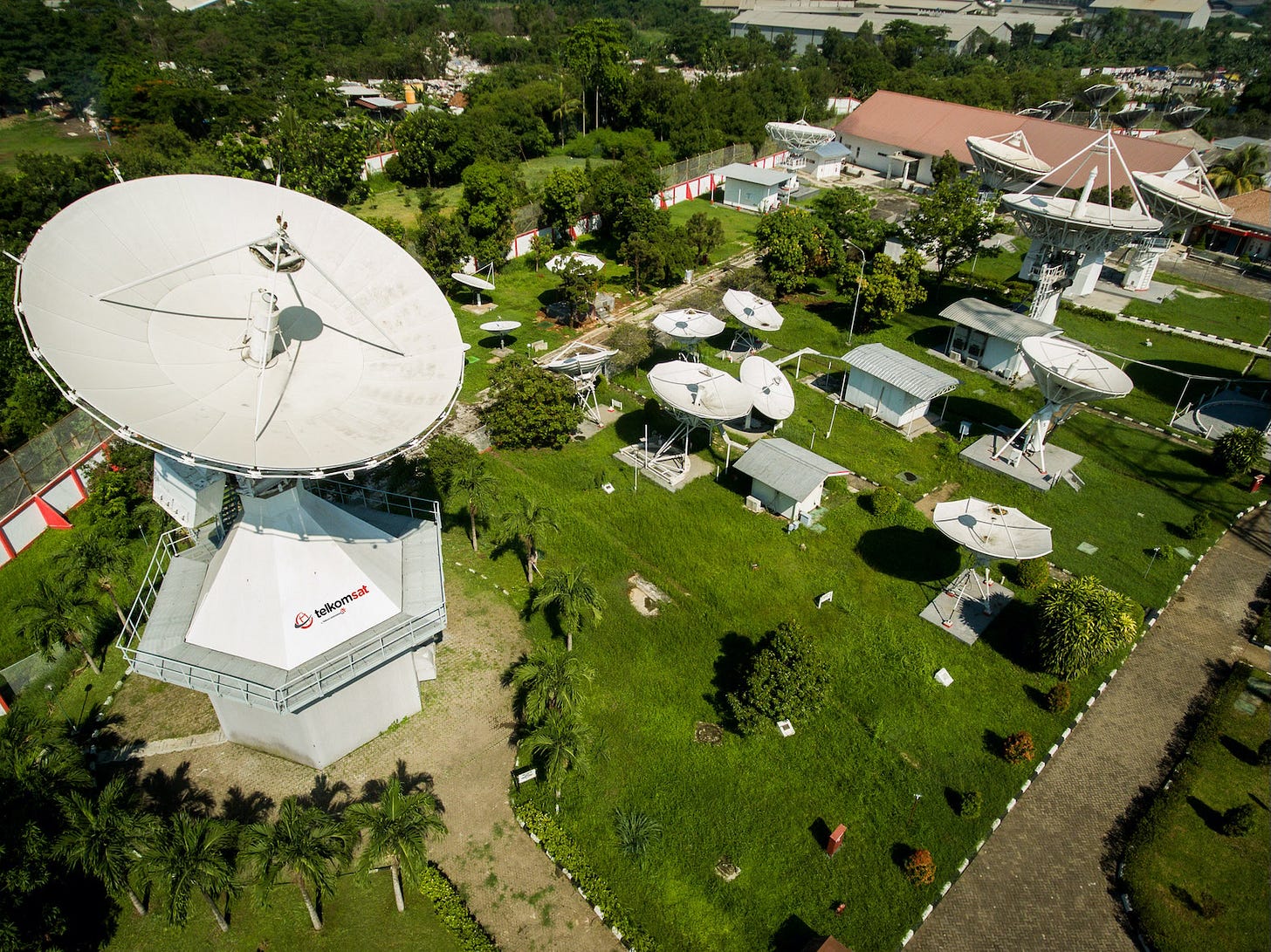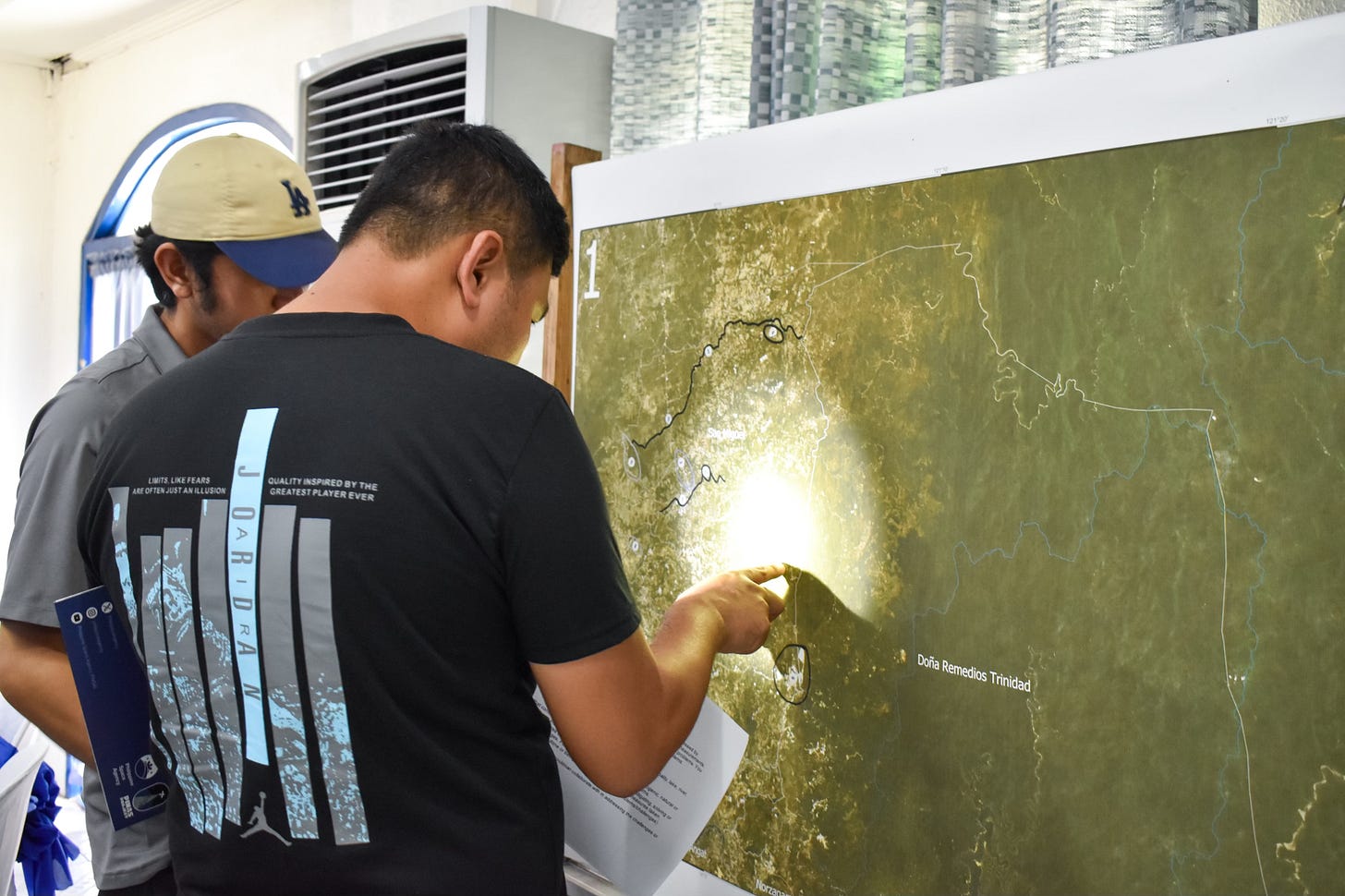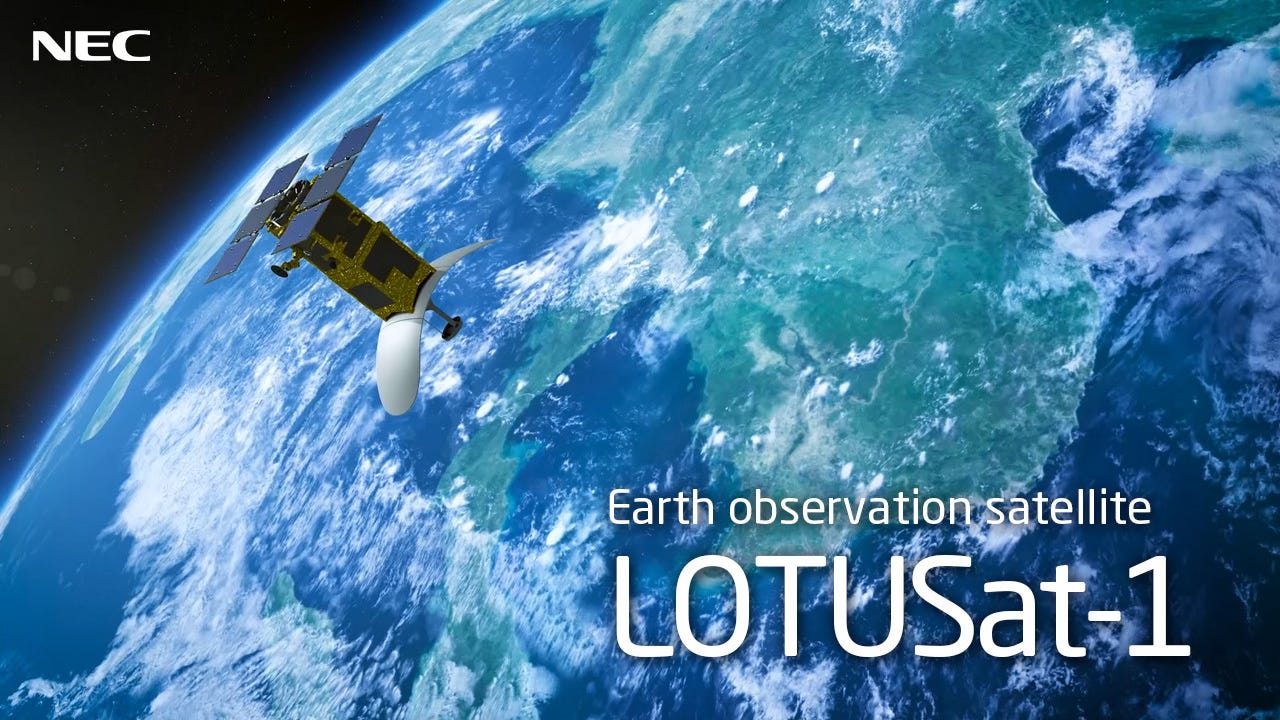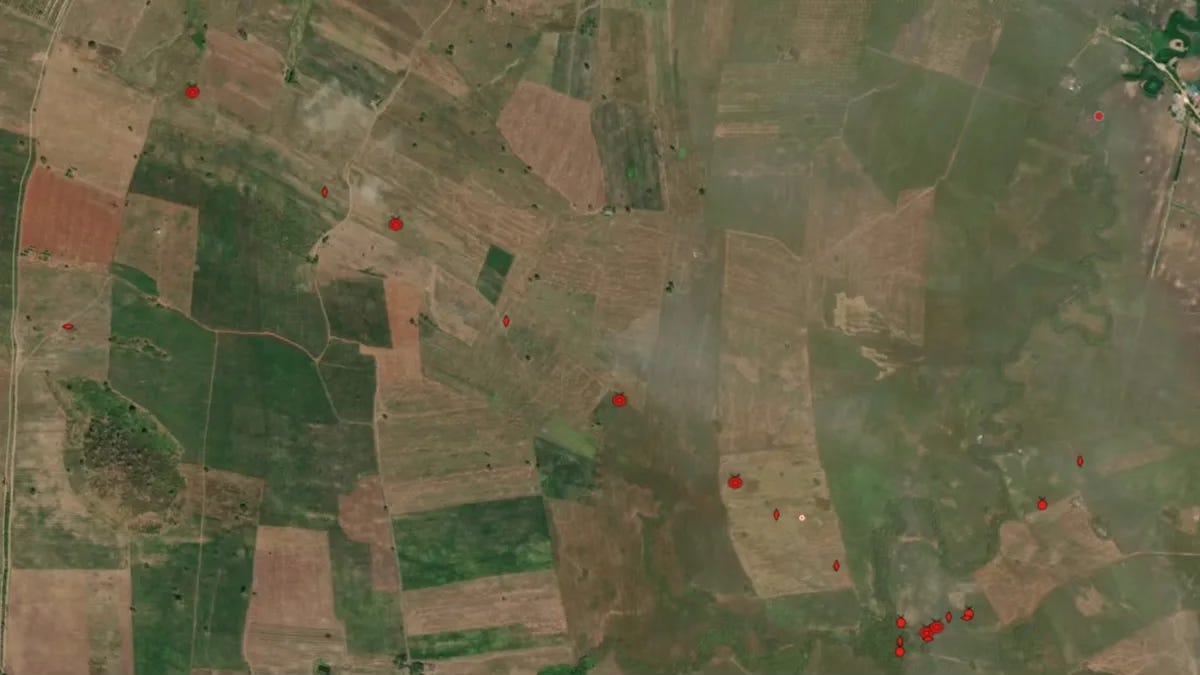Southeast Asia Space Roundup: 24 to 30 April 2025
A summary of all the space news in Southeast Asia over the past week, brought to you by AzurX
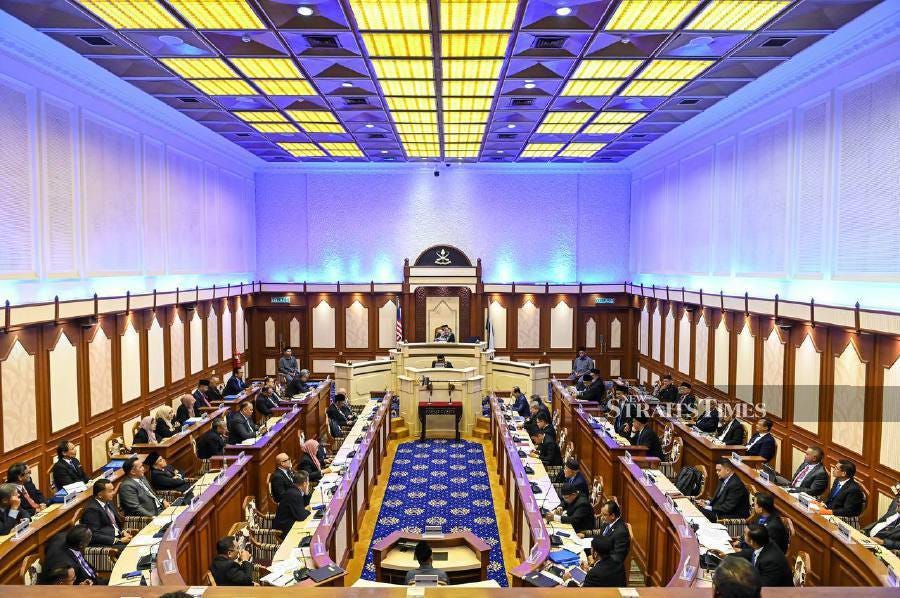
The following are the major space developments in the Southeast Asian region tracked by Southeast Asia Space Monitor over the past week:
Malaysia Space News
Malaysia and China Partner to Develop the Pahang International Spaceport
China is advancing plans to establish its first overseas launch site through a proposed equatorial spaceport in Malaysia’s Pahang state, in partnership with the Pahang State Development Corporation and Lestari Angkasa Sdn Bhd. A one-year feasibility study will assess the potential of the Pahang International Spaceport, strategically located near the equator to optimize launch efficiency. If approved, the facility could be operational within three to five years and generate over 2,000 jobs. This initiative reflects China's intent to expand global space infrastructure, ease launch bottlenecks, and deepen strategic ties with Malaysia, as emphasized during President Xi Jinping’s state visit. While logistical and geopolitical challenges remain—particularly overflight concerns and regional competition with Indonesia—the project signals China’s growing space diplomacy and ambitions to extend its launch capabilities beyond its borders.
Malaysia’s Great Space Sector Push: Opportunities and Challenges
Malaysia is repositioning its space sector as a strategic driver of digital transformation and national security, aiming to contribute 1% of GDP by 2030 under its National Space Policy and Malaysia Space Exploration 2030 roadmap. While the country has launched 13 satellites to date and possesses upstream capabilities through players like Uzma and MEASAT, experts argue that long-term growth hinges on a well-funded national space programme, stronger private sector involvement, and expanded downstream applications in agriculture, disaster management, and environmental monitoring. The government is exploring a spaceport in Sabah and has initiated feasibility studies aligned with Act 834, while fostering regional leadership through an ASEAN space moonshot initiative. Partnerships with global satellite firms like Shanghai Spacesail and support for CubeSat development underscore Malaysia’s dual-track strategy of building domestic capacity while leveraging foreign expertise. However, limited local demand, talent gaps, and fragmented regulatory support remain challenges, which stakeholders believe must be addressed through investment in education, incentives, and public-private partnerships to ensure Malaysia secures a meaningful role in the emerging global space economy.
TopCo of Malaysia’s MEASAT Settles Tax Dispute
Astro Malaysia Holdings Bhd announced that its subsidiaries, Astro Shaw Sdn Bhd (ASSB) and Measat Broadcast Network Systems Sdn Bhd (MBNS), have reached a settlement with the Inland Revenue Board (IRB) over additional tax assessments issued between 2019 and 2023. Under the revised agreement, Astro will pay RM114.95 million ($24.14 million)—RM4.04 million ($847,000) for ASSB and RM110.91 million ($23.29 million) for MBNS—representing just 15.6% of the original RM734.88 million ($154.33 million) assessment. This follows the IRB’s acceptance of new documentation supporting the subsidiaries’ claim of production costs as deductible, which also allows full capital allowance claims to be carried forward. Notably, there will be no penalties imposed and no profit and loss impact expected for the financial year ending 31 January 2025. Astro’s market capitalization stands at RM887.23 million ($186.32 million).
Thailand Space Developments
Thailand to Contribute a Payload to China’s Chang’e-8 Lunar Mission
China’s Chang’e-8 lunar mission, set for launch in 2028 or 2029, will feature international payloads including a lunar neutron analyzer developed by Thailand’s Ministry of Higher Education, Science, Research and Innovation and the National Astronomical Research Institute of Thailand, highlighting Thailand’s deepening role in lunar science. Thailand, already a signatory to China’s International Lunar Research Station (ILRS) initiative, joins a broader coalition of countries such as Russia, South Africa, Egypt, and Türkiye collaborating with China’s alternative to the U.S.-led Artemis program, reflecting Bangkok’s growing ambitions in global space diplomacy and research.

Thailand’s Chang’e-8 Payload Reflection of Deepening Space Ties With China
Thailand’s space ambitions reached a historic milestone at China Space Day 2025, where the China National Space Administration (CNSA) officially named Thailand one of ten global partners selected to contribute a scientific payload to the Chang’e-8 lunar mission, slated for 2029. Represented by senior officials from the Ministry of Higher Education, Science, Research and Innovation, along with GISTDA and NARIT, Thailand unveiled the ALIGN neutron detection instrument, developed with Mahidol University, which will support lunar resource mapping and water-ice detection—key to future Moon habitation. The announcement follows a decade of growing Thai-Chinese space collaboration, including participation in VLBI and satellite initiatives like THEOS-2 and BeiDou. Thailand’s prominent status at the event underscores its emergence as a serious actor in deep space science and a valued partner in China's broader International Lunar Research Station (ILRS) initiative, reinforcing bilateral ties and inspiring a new generation of Thai space professionals.
Thailand’s NT to Utilize China’s SpaceSail LEO SATCOM Constellation
China’s Shanghai Spacesail Technologies Co., Ltd. and Thailand’s National Telecom (NT) signed a strategic cooperation agreement during China’s Space Day to jointly accelerate Thailand’s digital economy through commercial spaceflight and low-Earth orbit (LEO) satellite internet. Under the agreement, Thailand’s state-owned telecom operator will utilize the Spacesail Constellation—China’s first mega constellation to formally enter its networking phase—to expand reliable satellite connectivity across underserved and remote regions. NT’s provision of the OneWeb LEO service prioritizes corporate users, SpaceSail will serve broader consumer markets. The partnership also aims to explore integrated satellite internet applications within vertical industries, positioning Thailand as a regional leader in space-enabled digital infrastructure.
Thailand’s NBTC Grants GEO Orbital Slots to Thaicom Subsidiaries
Thailand’s National Broadcasting and Telecommunications Commission (NBTC) has granted the 51°E and 142°E satellite orbital slots to Thaicom subsidiaries TC 51 and TC 42, respectively, following a direct award to prevent forfeiture of the country's rights. The decision—finalized on 24 April 2025—comes after no qualifying bids were submitted for these two orbits during Thailand's previous orbital slot auction. The awarded companies will pay 0.25% of revenue for slot usage. Thaicom had already maneuvered its Thaicom-9A satellite into the 50.5°E slot ahead of its expiration in late 2024, underscoring the urgency to secure orbital rights amid increasing regional competition. The move reflects Thailand’s broader effort to maintain strategic orbital assets and strengthen its national satellite presence.
Trump’s Tariffs Hit Iridium’s Supply Chain in Thailand, Costing $3-7 Million
Despite strong first-quarter revenue growth, Iridium’s stock fell nearly 7%, partly due to new U.S. tariffs impacting its supply chain from Thailand, where it sources hardware for global distribution. CEO Matt Desch warned shareholders that tariffs could cost between $3M and $7M in 2025, prompting Iridium to shift non-U.S. customer distribution to Europe. Thailand's role in Iridium’s manufacturing highlights broader vulnerabilities in satellite industry supply chains amid escalating trade tensions, while the company also faces investor skepticism despite emphasizing its differentiation through L-band spectrum advantages and new positioning services via its Satelles acquisition.
Indonesia Space Developments

Indonesia and Japan Discuss Military Space Cooperation
Indonesia’s Ministry of Defense has signaled strong interest in enhancing its space and cyber defense capabilities through deeper cooperation with Japan’s Self-Defense Forces (JSDF), particularly learning from Japan’s established Space Operations Squadron. During high-level meetings in Jakarta, Indonesian defense leaders emphasized the strategic value of acquiring Japanese expertise in space security and cyber resilience, viewing this as essential to safeguarding national sovereignty in emerging operational domains. The discussions also reinforced broader bilateral defense ties, including Japan’s confirmed participation in the 2025 Super Garuda Shield military exercise, further cementing Indonesia-Japan security collaboration in the Indo-Pacific.
Indonesia Rules Out Foreign Military Use of Proposed Biak Island Space Launch Site
Indonesia has reaffirmed its openness to international collaboration on the peaceful development of a satellite-launching spaceport on Biak Island, Papua, while firmly rejecting speculation of foreign military use. The Foreign Ministry emphasized that Biak was identified decades ago by Indonesia’s former space agency LAPAN as an ideal launch site and that feasibility studies must be updated. Amid reports suggesting Russian interest in establishing a military base on the island, Indonesian officials, including the Deputy Foreign Minister and Defense Ministry, categorically denied any such request, reiterating that Indonesia's policy prohibits the establishment of foreign military bases on its soil to safeguard national interests.
Indonesia Deepens Space Research Efforts With the United States
Indonesia’s National Research and Innovation Agency (BRIN), through its Space Research Center and Aviation and Space Research Organization, is deepening its global space research efforts by expanding infrastructure, leveraging international datasets, and pursuing strategic partnerships—including with NASA. During a visit from the U.S. Embassy to the Samaun Samadikun Science and Technology Area in Bandung, BRIN highlighted its reliance on NASA solar storm data to support research in space weather, ionospheric studies, and astrophysics. The agency also underscored the importance of its flagship project, the Timau National Observatory in East Nusa Tenggara, which will host Southeast Asia’s largest telescope and serve as a regional hub for astronomical research and STEM education. BRIN aims to position Indonesia as a regional leader in space science while fostering opportunities for international collaboration and academic exchange with institutions in the United States.
Indonesia to Use Satellite Technologies for Maritime Defense and Security
The Marine Digital Summit 2025, organized by the Alumni Association of the Sepuluh Nopember Institute of Technology (IKA ITS), marked a strategic push toward digitalizing Indonesia’s maritime sector, with a strong emphasis on enhancing national sea defense. Central to the initiative is the development of autonomous vessel systems under the Nusantara Fence program, supported by Telkomsat’s satellite infrastructure. The summit drew high-level participation from academia, industry, and government, including SKK Migas and PT Pelindo Jasa Maritim, and underscored the critical role of dual-satellite communications (GEO and LEO) in enabling reliable maritime defense and operations. This initiative reflects Indonesia’s broader ambition to integrate advanced digital technologies into defense, energy, and port logistics to boost national resilience and competitiveness.
Philippines Space News
Philippines and Chile Discuss Cooperation on Space Science and Astronomy
The Philippine Embassy in Chile, the Philippine Space Agency (PhilSA), and the Department of Astronomy of Universidad de Chile held an online meeting to explore new avenues for bilateral cooperation in space science and technology, focusing on research collaboration, educational exchanges, and formal agreements. Recognizing Chile’s global leadership in astronomy, Philippine representatives emphasized the strategic importance of building linkages to enhance national space capabilities, while Chilean counterparts expressed strong interest in joint initiatives. Plans were made to hold a technical workshop in May 2025 and to deepen cooperation through the upcoming Space Science and Astronomy Research Conference in Manila, underscoring growing Philippine-Chilean engagement in space diplomacy and scientific development.
Philippine Space Agency Trains Regional Governments in Using Satellite Data
The Philippine Space Agency (PhilSA), in collaboration with the Provincial Government of Bulacan, conducted a targeted three-day training under the PINAS Project from 23 to 25 April 2025, equipping local disaster risk managers with practical skills in applying space-based data for disaster preparedness and climate resilience. Focused on flood and drought mapping, ground motion monitoring, and geospatial analysis, the workshop introduced participants to remote sensing tools, particularly Sentinel-2 imagery from the Copernicus program, and delivered tailored data packages to support localized planning. This initiative marks a strategic push to embed Space Science and Technology Applications (SSTA) into local government operations, enhancing hazard monitoring, risk assessment, and response capabilities. It also underscores a growing national-local partnership model for scaling satellite-driven decision-making in disaster risk reduction and management (DRRM), positioning Bulacan as a pilot province for operationalizing space-based solutions across Philippine LGUs.
Philippine Space Agency and Italian Embassy Host Cosmic Journey’s Space Event
The Philippine Space Agency (PhilSA), in collaboration with the Italian Embassy and the University of the Philippines NISMED, launched "Cosmic Journeys: Celebrating Philippines and Italy in Space" on 23 April 2025, highlighting bilateral achievements in space exploration through exhibits and public engagement activities. The initiative underscores growing Philippine-Italian cooperation in space science and education, aiming to inspire broader interest in space technology and strengthen international partnerships in the field.
Singapore Space Developments
Singapore and U.S. Defense Officials Discuss Cooperation in the Space Domain
At the 10th U.S.-Singapore Mid-Term Defense Review held at the Pentagon, U.S. and Singaporean officials reaffirmed their strong bilateral defense ties and emphasized expanding cooperation into the space domain alongside traditional areas such as reciprocal force access and defense industrial resilience. Discussions between John Noh, Performing the Duties of Assistant Secretary of Defense for Indo-Pacific Security Affairs, and Singapore’s Deputy Secretary for Policy, Frederick Choo, included the strategic importance of space and satellite capabilities in strengthening regional security and supporting a free and open Indo-Pacific amid rising tensions, particularly in the South China Sea.
Singapore’s Space Faculty Prepares for World Robot Olympiad
Tatler Asia profiled Lynette Tan, CEO of Singapore’s Space Faculty, who has evolved her mission from advancing space exploration to building a broader deep-tech ecosystem, aiming to inspire young innovators in fields like robotics and AI. After years of promoting space through Singapore Space & Technology Ltd. and educational initiatives, Tan launched Expand Space—a platform that reimagines career paths for youths under 35 by showcasing futuristic roles and fostering real-world collaboration. With Singapore set to host the World Robot Olympiad (WRO) finals in 2025, co-located with Expand Space, Tan’s vision positions the city-state as a rising global hub for innovation and talent development in space, robotics, and next-generation technologies.
Singapore’s Land Authority Expands Partnerships for GIS and Satellite Imagery
At the 2025 Global Space Technology Convention & Exhibition, the Singapore Land Authority (SLA) strengthened its commitment to geospatial innovation through two strategic MoUs—one with the Office for Space Technology and Industry (OSTIn) to catalyze the use of Earth observation (EO) data for climate resilience and humanitarian solutions across Asia-Pacific, and another with NUS CRISP to advance satellite imaging and remote sensing research for national mapping and carbon biomass analysis. These partnerships, alongside SLA's announcement of expanding its Singapore Satellite Positioning Reference Network (SiReNT), underscore Singapore’s integrated strategy to harness space-based technologies for sustainability, smart city development, and precision geospatial applications across public and private sectors.
Vietnam Space News
Vietnam and Japan Deepen Space Cooperation Around LOTUSat-1
Vietnam and Japan have formally deepened their bilateral space cooperation through a high-level joint communiqué issued during Japanese Prime Minister Ishiba Shigeru’s April 2025 visit to Hanoi, highlighting a shared commitment to accelerating Earth observation capabilities and satellite deployment. Central to this collaboration is the planned launch and operation of Vietnam’s Earth observation satellite, LOTUSat-1, with both countries pledging close coordination and joint efforts in satellite operations, technology transfer, and human capital development. The communiqué positions this satellite project as a strategic expansion of Vietnam-Japan scientific ties and a foundation for broader cooperation in space, including training and research in advanced science and technology fields such as semiconductors, AI, and quantum technologies and science. This enhanced space partnership, part of a broader framework of security, economic, and innovation agreements, reinforces Vietnam’s ambition to build sovereign space capabilities and integrate into the regional and global space economy with Japanese technological support.
In Upcoming Visit to Vietnam, France’s President Macron Expected to Advocate for Satellite Deals
During his upcoming visit to Vietnam, French President Emmanuel Macron is expected to advocate for French satellite firms to improve their positioning in upcoming Vietnamese government tenders, notably a major Earth observation satellite deal in which Airbus Defence & Space is a contender. Macron’s visit also aims to bolster the chances of emerging players such as Loft Orbital in Vietnam’s expanding space sector. While no immediate contracts are expected, the visit underscores France’s strategic push to strengthen its industrial footprint in Southeast Asia’s high-tech sectors, including space, in the face of intensifying global competition.
Myanmar Space Developments
UK’s BBC to Broadcast Independent News to Myanmar via Thaicom-6
Following the deadly 7.7-magnitude earthquake in Myanmar and the abrupt defunding of Voice of America (VOA) by the Trump administration, the BBC has launched a direct-to-home satellite news service in Burmese via Thaicom-6 to address the urgent need for independent information amid ongoing civil conflict and natural disaster recovery. The BBC’s intervention replaces the now-defunct VOA channel and responds to surging digital demand for credible news in a country ranked among the worst globally for press freedom. While this initiative reinforces the BBC’s global public service role, it also adds pressure to its already strained World Service budget, sparking renewed debate over UK government funding responsibilities.
Starlink Is a Vital Lifeline in Myanmar’s Regions Under “Information Siege”
In Myanmar’s central Anyar region, Starlink satellite internet has become a critical lifeline amid frequent junta-imposed communication blackouts designed to suppress information and isolate communities. Since mid-2024, resistance groups and residents have deployed Starlink hotspots, enabling access to uncensored news, communication with families abroad, and continuity for small businesses reliant on digital connectivity. The technology's resilience against government censorship is reshaping access to information and economic resilience in areas under information siege. This development highlights the strategic role of commercial satellite networks like Starlink in bypassing authoritarian controls and sustaining civil society in contested digital environments.
Cambodia Space News
Declassified U.S. Satellite Reconnaissance Imagery Used to Identify Old Minefields in Cambodia
In a groundbreaking application of space-based intelligence, Cambodia’s decades-long demining effort has been significantly accelerated through the use of declassified images from U.S. HEXAGON military satellites. These Cold War-era images, dating from the 1970s and 1980s and released publicly in 2011, are now being overlaid with modern mapping tools by the HALO Trust to identify long-forgotten roads—prime locations for buried landmines from Cambodia’s past conflicts. With over 10 million mines estimated to have been laid and only 1,200 square miles cleared to date, the integration of archival satellite imagery is enabling faster prioritization of high-risk zones. This innovative use of satellite data not only highlights the enduring value of historical space reconnaissance for humanitarian purposes but also underscores the need for scalable satellite-augmented tools in global post-conflict recovery efforts.
Be sure to catch up with space activities in the region in the next edition of Southeast Asia Space Monitor’s space roundup!
Follow Southeast Asia Space Monitor on X at: @SEAsia_Space and on BlueSky at: @seasiaspacemonitor.bsky.social




